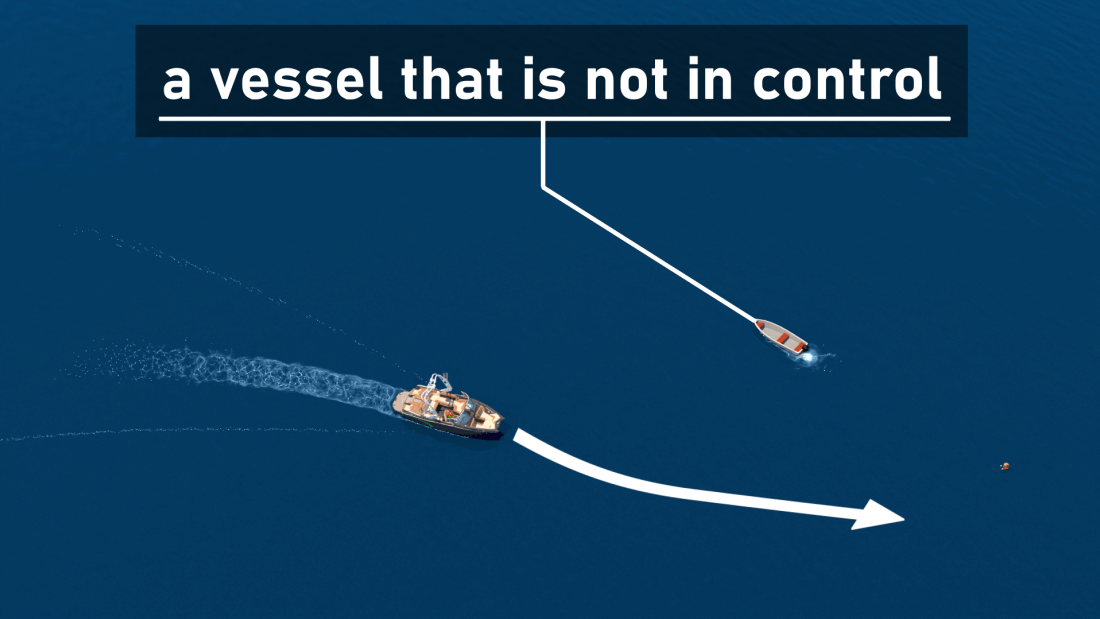Power-driven vessel underway
There are two sets of navigation rules; inland and international. A nautical chart will show you the demarcation lines where the rules change from international to inland and vice versa. In general, these demarcation lines follow the coastline and cross inlets and bays. On the seaward side of the demarcation lines, international rules apply.
We will concentrate on the inland rules, since most of your recreational boating will occur on the landward side of the demarcation lines.
The Navigation Rules are written with the understanding that not all boats can maneuver with the same ease. Therefore, Rule 18 states that certain vessels must keep out of the way of other vessels due to their ability to maneuver.
A power-driven vessel underway must keep out of the way of the following:
- A sailing vessel, under sail only, and vessels propelled by oars or paddles. (Note: when a sailboat has its motor running, it is considered a power driven vessel.)

- A vessel engaged in fishing, whose fishing equipment restricts its maneuverability. This does not include a sport fisher or party boat and generally means a commercial fishing vessel.

- A vessel with restricted maneuverability such as a dredge or tow boat, a boat engaged in work that restricts it to a certain area, or a vessel transferring supplies to another vessel.

- A vessel not under command – broken down.

Each of these vessels must keep out of the way of the next vessel. For example, a sailboat must keep out of the way of a vessel engaged in fishing, which in turn must keep out of the way of a vessel with restricted maneuverability. And everyone must keep out of the way of a vessel not under command.
When two power-driven vessels are in sight of one another and the possibility of collision exists, one vessel is designated by the rules as the stand-on vessel and the other is designated as the give-way vessel.
-
The stand-on vessel should maintain its course and speed.
-
The give-way vessel must take early and substantial action to avoid collision.

If it becomes apparent that the actions taken (or not taken) by the give-way vessel are dangerous or insufficient, the stand-on vessel must act to avoid collision.